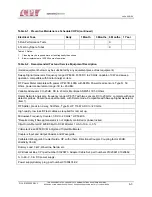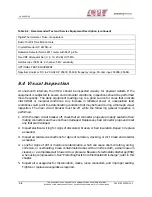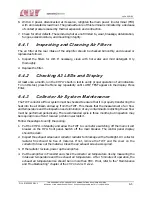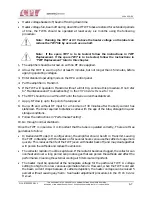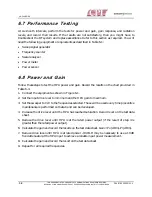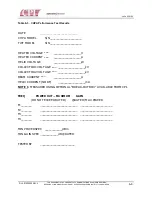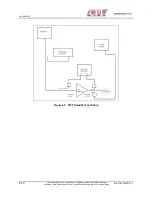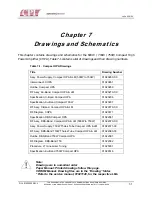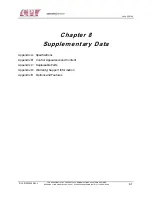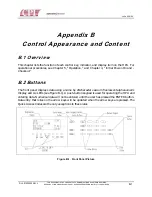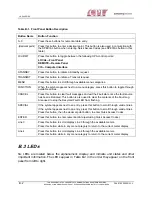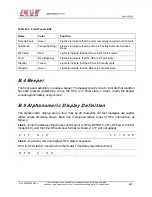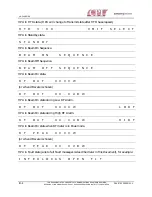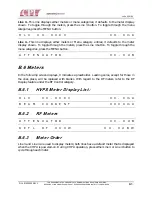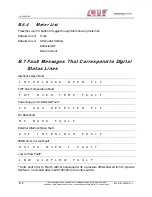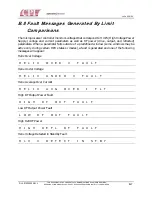
CHPA SERIES
6-8
THIS
DOCUMENT
IS
THE
PROPERTY
OF
COMMUNICATIONS
&
POWER
INDUSTRIES.
REPRODUCTION
OR
RELEASE
WITHOUT
EXPRESS
PERMISSION
IS
STRICTLY
PROHIBITED
D
OC
.01023245
R
EV
.L
6.7 Performance Testing
At six-month intervals, perform the tests for power and gain, gain response, and radiation
levels, and record their results. If the results are not satisfactory, then you might have to
troubleshoot the RF system and replace assemblies. Refer to this section as required. You will
need the following equipment or equivalents as described in Table 6-1:
•
Sweep signal generator
•
Frequency counter
•
Scalar analyzer
•
Power meter
•
Power sensor
6.8 Power and Gain
Follow these steps to test the HPA power and gain. Record the results on the chart provided in
Table 6-3.
1.
Connect the equipment as shown in Figure 6-1.
2.
Set the input drive level to minimum and the HPA gain to maximum.
3.
Set the sweeper to CW to the frequencies selected. These will be used every time preventive
maintenance is performed so that a trend can be developed.
4.
Increase the drive level until the HPA has reached saturation. Record level on the test data
sheet.
5.
Reduce the drive level until HPA is at the rated power output (if the result of step 4 is
greater than the rated power output).
6.
Calculate the gain and record the results on the test data sheet. Gain = Po (dBm)–Pi (dBm).
7.
Reduce drive level until HPA is at rated power -10 dB. It may be necessary to use a 10 dB
fixed attenuator at the HPA input to achieve a reliable input power measurement.
8.
Calculate the gain and record the result on the test data sheet.
9.
Repeat for all required frequencies.










